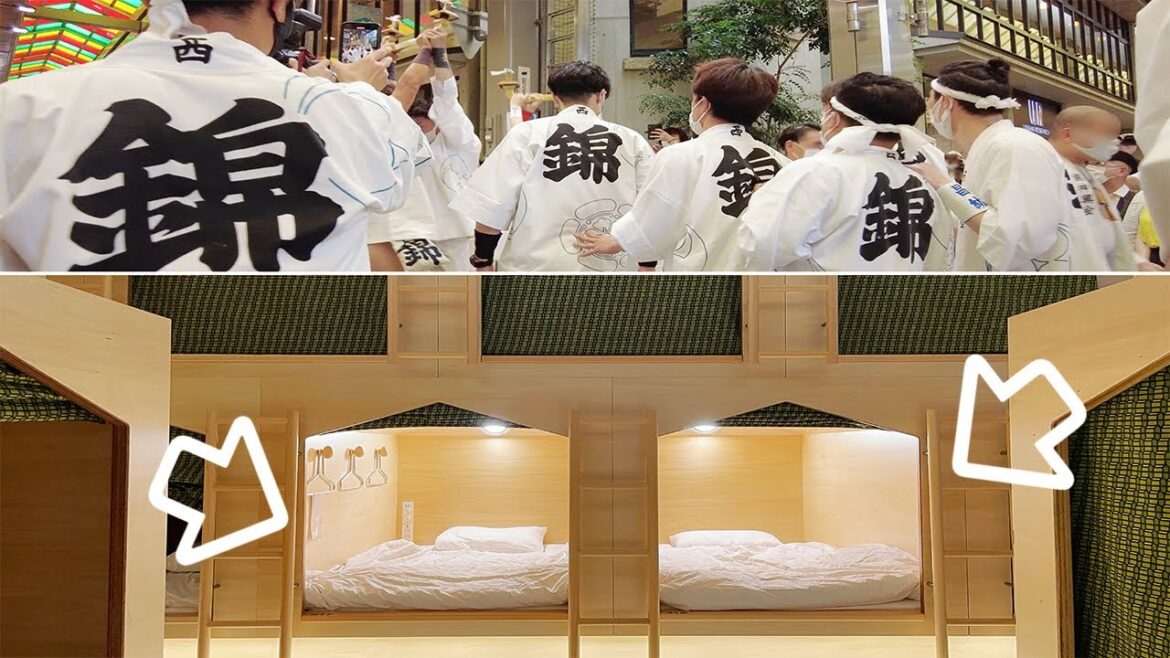Today I came to Kyoto, which is bustling with the Gion Festival, the first Gion Festival Yamahoko-junko and Mikoshi-togyo in three years.
I strolled through Kyoto’s Nishiki Market and had the rare experience of encountering a “Kannarashi”.
The hotel was very clean and cozy with warmth in every detail and every nook and cranny created for ease of use.
The abundance of amenities and the bathrooms were a nice touch.
【Fees】3,966JPY/30.81USD/2512.54INR/41.31CAD/28.53EUR/25.32GBP/338319.20KRW
【Location】 6-minute walk from Karasuma-Oike City Subway Station.
Hankyu Karasuma station 8 min. walk
Hankyu Kyoto Kawaramachi station 12 minutes walk (this route)
【Hotel】 MAJA HOTEL KYOTO
【Room】sleep-in Hut
【Hotel HP】https://maja-hotel.com/
The hotel has a total of 60 capsule rooms of two sizes called “HUT” with a characteristic design of a triangular roof that resembles a hut.
The hotel is designed by Harri Koskinen, a Finnish product designer.
The wood textures and lighting create a cozy and warm home-like experience.
On the first floor, there is a café “CAFE AALTO” in the Academia bookstore designed by Alvar Aalto, a leading Finnish architect in Helsinki, Finland, where you can enjoy Finnish style cinnamon rolls, coffee, and Finnish traditional food such as salmon soup. You can also enjoy Finnish-style cinnamon rolls, coffee, and salmon soup, a traditional Finnish dish.
[About Gion Festival]
The Gion Festival is a month-long festival held at Yasaka Shrine.
This year, for the first time in three years, the Gion Matsuri Yamaboko Junko, Jinko Matsuri and Mikoshi Togyo were held on the same day, and it was very crowded.
About the Yamaboko Junko (I could not see it this time…)
Yamaboko Junko is the highlight of the Gion Festival.
It is said that the festival began as a procession of floats paraded through the town to appease the god of pestilence who brought misfortune and misfortune.
The Yamaboko Junko is said to be a purification ceremony to purify the path for the portable shrines. 23 floats are in procession, and the procession takes place in the morning.
The largest of the floats weighing as much as 12 tons requires a total of 180 people to assemble, parade, and dismantle.
[About the “Kannarashi” I encountered]
The “Narikan”, a metal fixture attached to the end of the portable shrine’s carrying pole, is held above the head as the portable shrine travels through the Ujiko district.
The “Kannarashi” is a spectacle to behold, in which one shrine parishioner passes a “Kan,” a kind of metal ornamental tool, from one shrine parishioner to the next.
The participants pray for the purification of the Nishiki Market shopping street up to Nishiki Tenmangu Shrine, and for the health, prosperity, and safety of the people on the shrine grounds.
The floats are bounced with unique steps while calling out “Hoitto, hoitto,” and are shaken up and down to sound “Kashan, Kashan” as they move across the street.
[About the “Shinko-Sai”]
The “Shinkosai” is the procession of the deities from Yasaka Shrine to the “Otabisho” in Shijo Teramachi.
On the evening of the 17th, the three portable shrines will go around the Ujiko area on their own route, and enter the “Otabisho” in Shijo Teramachi in the evening.
A week later, on the evening of the 24th, the three portable shrines leave the “Otabisho” and travel on separate routes, returning to Yasaka Shrine at midnight. The procession of the portable shrines on the 24th is called “Kankosai.
——
The title, description, and subtitles in the video may differ from the actual content due to automatic translation.
The amount may vary depending on the time of year, conditions, and other factors.
#日本 #京都 #祇園祭 #カプセルホテル #フィンランド #旅行 #一人旅 #Japan #Kyoto #Osaka #travel #solotravel #capsule hotel #Finland #Gion Festival

